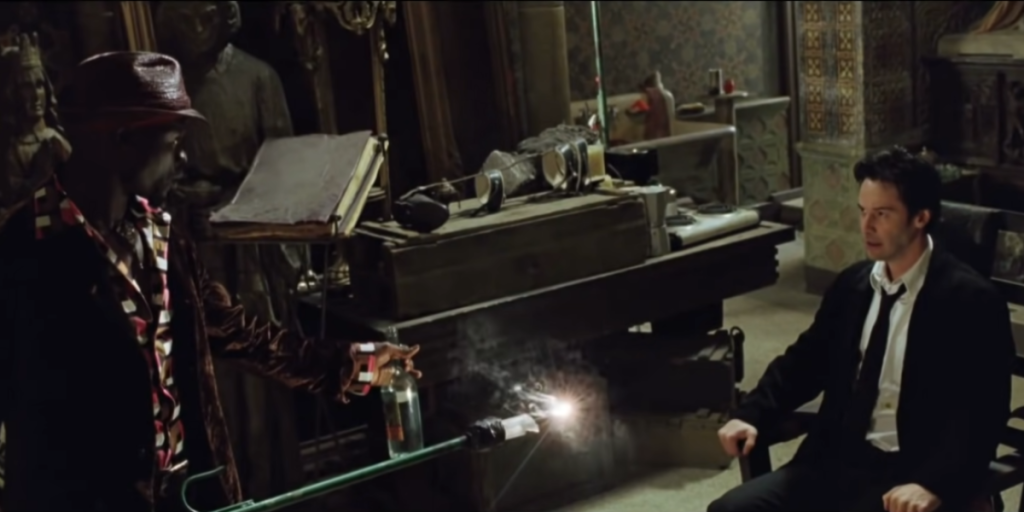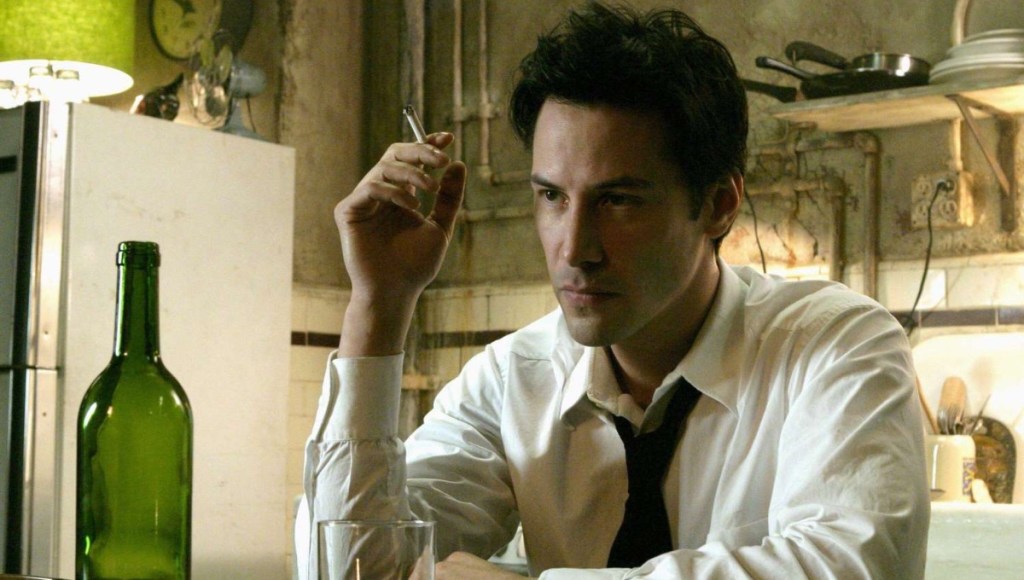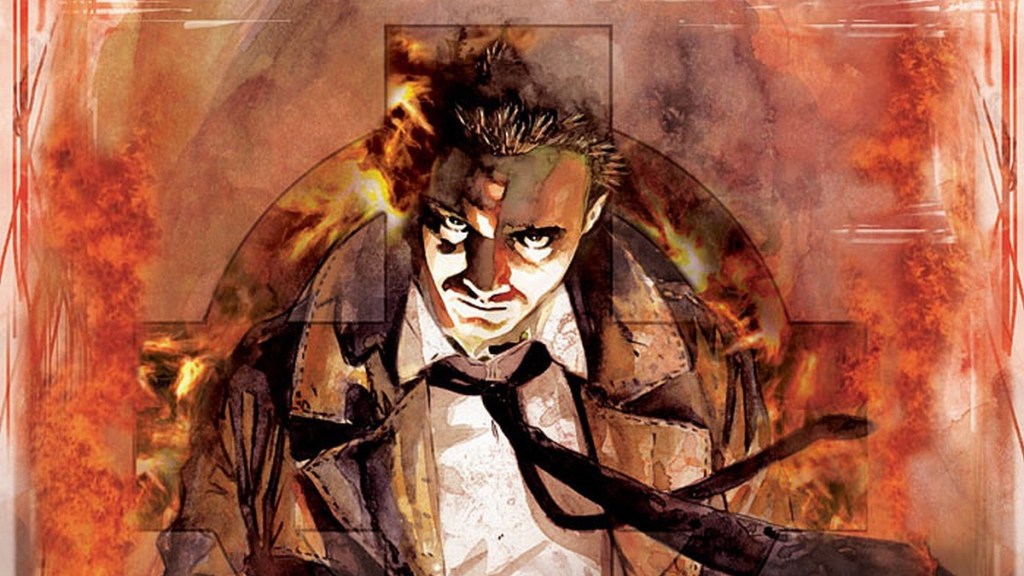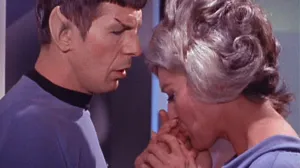Back in 2005, Keanu Reeves brought one of DC Comics’ most popular characters to the big screen in Constantine. The cynical, chain-smoking exorcist came to life in the film, even if he’s not exactly a carbon copy of the character on the page. Reeves delivers an inspired performance, helping to maintain the film as a cult favorite today with a sequel in development. While a more comic-accurate version of John Constantine would later arrive played by actor Matt Ryan for NBC’s Constantine and The CW’s Arrowverse, many fans remain loyal to Reeves and his take on the character.
Videos by ComicBook.com
Reeves’ enthusiasm, especially in recent years, has helped elevate the film, revealing the joy The Matrix star found in his performance and his love for the character. He also gushed over the film during the Constantine 15th anniversary reunion, acknowledging the differences between his version and the original from DC Comics.
“Then I did some research on the character and I was… not hesitant but, you know, I’m not English and I’m not blonde, and the character is,” he said. “So, I had to reconcile that, and part of that was ‘Well, what was at the base of the character? What could I bring to the character? Why even do it?’ And it’s such a beautiful character, this kind of humanitarian cynic, kind of tired, world-weary, tired of all of the rules and morals and ethics and angels and demons, but still a part of it. And I loved his sense of humor, so I was really excited.”
Keanu Reeves’ Constantine Lives in America

Once you start to change a character and story for a screen adaptation, the typical reaction usually dips at least a toe in outrage. But Constantine works without being a carbon copy of John Constantine from his appearances in Alan Moore’s Swamp Thing and Vertigo’s Hellblazer.
For starters, Reeves keeps his version firmly in America. The comic original is proudly British, hailing from Liverpool and eventually moving to London. His look was also inspired by Sting, borrowing the look, blonde hair, and birthplace for his appearances. The series also injects a lot of punk rock flavor that would remind readers of The Clash or Sex Pistols, even putting Constantine in his own punk band at one point.
Moving the film to Los Angeles and losing the U.K. sensibilities was certainly a blow in the end, but it ended up working out.
Keanu Reeves’ Constantine Leaves Behind His Roots

Also missing from the film version is Constantine’s Liverpool accent. Reeves has attempted an English accent in the past, with varying results. His decision to stick to his natural accent and hair color – Constantine is blonde like Sting in the books – probably benefitted the film in the end.
It also softens Constantine a bit more in the film. The comic version is far more cynical and focused on saving his hide, playing an occult detective, and manipulating people as he goes. He’s not the hero we see in the film, though both maintain their cynical streak. Reeves is far more of a hero from the start of the film, balancing his foul mouth and edge while acknowledging that the audience knows he’s the hero and he’s presented as such.
John Constantine in Hellblazer is a hero by definition, but he’s far more cynical and mischievous. His motivation lies with adrenaline and a general attraction to the weird. Both portrayals of the character battle demons, but the original is also more apt to pick their pockets or con them out of their powers.
[RELATED: Before Creature Commandos, These DC Extended Universe TV Shows Almost Happened]
Keeping ‘Dangerous Habits’

Constantine borrows its plot from Garth Ennis’ first comic foray in Hellblazer titled “Dangerous Habits” for portions of the film. The original story sees Constantine discovering he has advanced lung cancer due to his years of smoking. He wants to remain alive in the film and that motivation is the driving force behind his “good deeds” against the forces of Hell.
While parts are unique to the character and the writers who brought him to life, the film is still a big departure from the comic storyline. Instead of sacrificing himself and forcing the Devil to take him, Constantine is determined to con Satan and his fellow Lords of Hell to save himself. He succeeds in pitting Satan, known as The First of the Fallen in the books, against Beelzebub and Azrael for control of Constantine’s soul. His scheme is to trick them and create a dilemma: If Constantine dies from his cancer, all three will go to war for the soul. It would also make the demons weak to an attack from Heaven. So instead of letting him die, they heal him.
Lucifer takes the Satan role in the film and opts to save Constantine after the exorcist attempts suicide a second time to barter with Hell’s ruler. The dilemma for the film’s Satan is saving face amid a major loss, reaching into Constantine’s lungs to pull out the disease and keep him on the schedule for a future residency in Hell.
Maintaining Your Soul

Probably the biggest departures from Hellblazer in Constantine relate to why the character is sent to Hell in the first place. In the comics, he is damned after summoning a demon that ends up killing a little girl. His entire plan in “Dangerous Habits” revolves around that knowledge, leading him to save himself without help from forces in either Heaven or Hell.
In the film, his push to save his life is more of a character trait than an idea driving the plot. After his introduction, Detective Angela Dodson seeks him to help after the suicide death of her sister. In passing, Constantine tells his story and how he can see “half breeds,” which is what pushed him to suicide. Saving his soul in the movie is a bit more altruistic than the comic inspiration.
If you can take one thing from this piece, it’s the knowledge that a comic movie can still be good when it is devoid of major connections to the source material. John Constantine on the page looks and feels differently than his on-screen counterpart, but both share a piece of soul they didn’t have to forfeit to the film.
Stream Constantine for free on Tubi.








